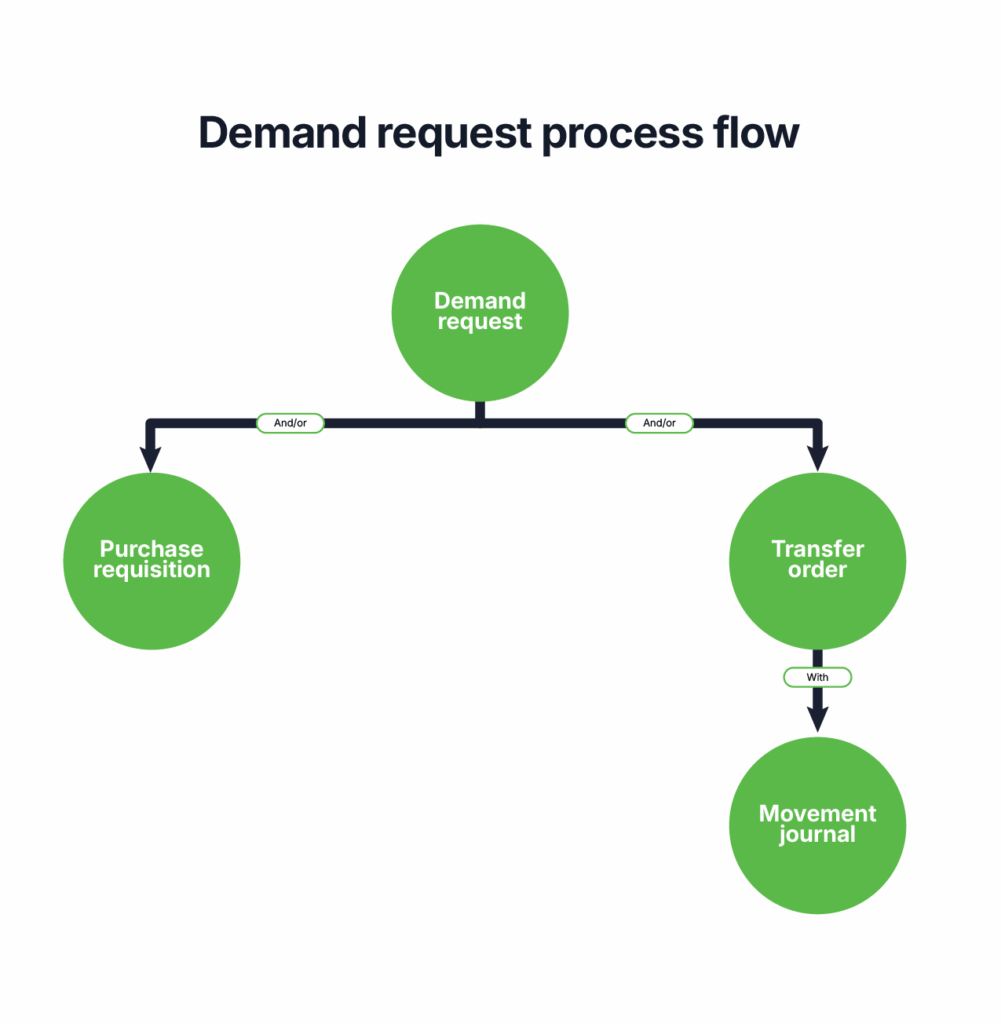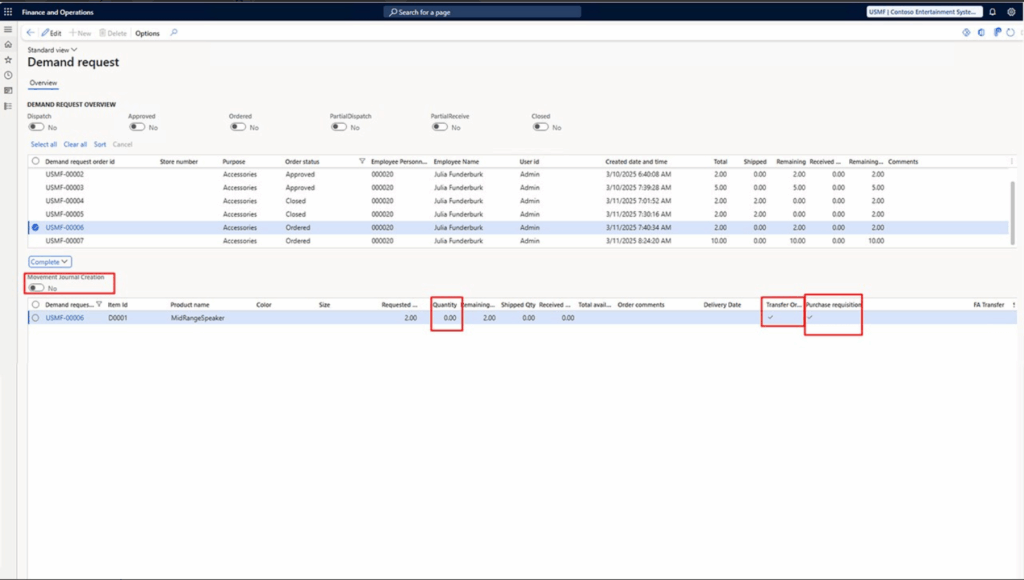In today’s dynamic business environment, ensuring inventory availability at the right time and in the right place is crucial for maintaining operational efficiency. While Dynamics 365 Finance and Operations (D365 F&O) offers robust procurement functionality, many organizations face a gap when handling internal inventory needs that don’t require a full purchase requisition.
While demand planning in Microsoft Dynamics 365 Supply Chain Management delivers powerful, next-generation collaboration capabilities, one key element is often missing: the demand request process itself.
As of now, Microsoft Dynamics 365 Finance & Operations (F&O) does not include a native feature called “Demand Request” as part of its standard demand planning capabilities. The platform offers robust tools for demand forecasting, master planning, and inventory management, but initiating internal inventory requests that intelligently route to stock transfers, movement journals, or procurement typically requires custom development or third-party solutions.
In this blog, we’ll walk you through Confiz’s Demand Request solution for Dynamics 365, explaining how it works, its business benefits, and where it best fits within various industries.
What is a Demand Request in Dynamics 365 F&O?
A Demand Request is a formal, internal request raised within Dynamics 365 F&O to fulfill inventory requirements before jumping into a purchase process. Unlike standard purchase requisitions, Demand Requests allow users to check existing stock availability and then select the most suitable fulfillment method.
Key characteristics
- Initiated by any user needing specific inventory items
- Includes product name, description, and optional images
- Routed through a structured workflow for approval and fulfillment
- Can result in a transfer order, movement journal, or purchase requisition
Why is standard procure-to-pay not always enough?
The out-of-the-box procure-to-pay cycle in D365 F&O is effective for managing external purchases but lacks flexibility for internal stock transfers and non-financial adjustments.
Common limitations
- Purchase requisitions cannot generate transfer orders or movement journals
- Internal stakeholders lack visibility and control over informal inventory needs
- Decision-making is reactive due to fragmented request processes
This gap creates inefficiencies, especially in large organizations where internal stock movement is frequent and time-sensitive.
Here’s how a standard procure-to-pay cycle in Dynamics 365 F&O looks like:

Why is the Demand Request process needed?
The standard purchase requisition process in Dynamics 365 Finance and Operations (D365 F&O) does not offer the flexibility to create transfer orders or movement journals. This limitation can be a bottleneck when fulfilling internal inventory needs that don’t require procurement from vendors.
The Demand Request process bridges this gap by enabling organizations to determine the most suitable method for fulfilling a request, whether through available stock transfer, internal adjustment, or purchase.
Key functionalities of the Demand Request process
The Demand Request is designed to be user-centric and flexible. Here’s how it works:
- Access control: All users can create demand requests, but they can only view and track their submissions.
- Item selection: Users can select items from the product catalog or manually enter the product name and description.
- Attachments: Users can attach an image or reference material to provide additional context for the request.
- Workflow integration: Each request follows a defined approval workflow.
- Store-level management: Once approved, the store user can modify, assign, or process the request. Approved requests appear in a centralized Demand Request Review form for the store team.
Here is how the demand request process looks like:














